| Gemstone Chart |
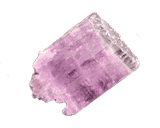 Natural Kunzite Natural Kunzite
Kunzite is the pink to light purple gem variety of the mineral Spodumene.Although kunzite is a relatively soft and delicate gem, and can fade after prolonged exposure to light, its appealing color makes it a popular gem. Small gems are seldom cut from kunzite because of its cleavage and strong pleochroism. It is rarely seen in rings, necklaces, or any other forms of jewelry where small stones are required.
Color: Pink, Lilac, Light Violet
Categories: semi-precious stone
Chemical Composition: LiAlSi2O6
Crystal Group: Monoclinic
Refractive Index: 1.660 - 1.675
Hardness: 7
Density: 3.17 - 3.19
Occurrence: Africa, Brazil, Canada, Madagascar, Mexico, Myanmar, Afghanistan, Sweden, and USA (California).
| 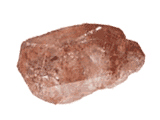 Natural Morganite Natural Morganite
Morganite is a rare, pink semi-precious gemstone of the beryl family of minerals. With pink a fashion favorite, morganite is a gem that is much in demand. It has a dazzling brilliance and soft color that ranges from clear pink to a lovely peach.
Color: Pink - Champagne
Categories: semi-precious stone
Chemical Composition: Be3Al2(SiO3)6
Crystal Group: Hexagonal
Refractive Index: 1.577(+-.016), 1.583 (+-.017)
Hardness: 7.5-8
Density: 2.72 (-.05, +.12)
Occurrence: Brazil, Madagascar
| 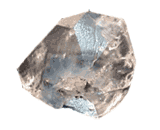 Natural Phenakite Natural Phenakite
phenakite is a fairly rare nesosilicate mineral consisting of beryllium orthosilicate, It is one of the brightest of the colorless gemstones.Madagascar seems to be the most important source for this rare stone.
Color: White
Categories: semi-precious stone
Chemical Composition: Be2SiO4
Crystal Group: Hexagonal
Refractive Index: 1.651-1.696
Hardness: 7.5-8.0
Density: 2.94--2.96
Occurrence: Russia, Madagascar, U.S.A., Brazil, France, Switzerland, Ceylon, E. Africa.
| 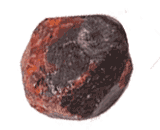 Natural Rhodolite Natural Rhodolite
Rhodolite is a beautiful pink to violetish red garnet which was named after the rhododendron flower. Commercially rhodolite is one of the most important garnets. Rhodolite is quite available in small sizes which are relatively low in price. Very fine large rhodolite garnets are rare and are moderate in price.
Color: red, purple-red
Categories: semi-precious stone
Chemical Composition: Al2(SiO4)3
Crystal Group: Cubic
Refractive Index: 1.75 - 1.77
Hardness: 7.25
Density: 3.74 - 3.94
Occurrence: Brazil, East Africa, Ceylon, India, Madagascar, Zimbabwe
| 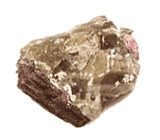 Natural Rubelite Natural Rubelite
The rubellite is a particularly beautiful gemstone from the colourful family of the tourmalines. Its colour shines in the most beautiful nuances from red to shocking pink. Rubelite is rich in lithium and free of magnesium and iron.
Color: Hot Pink to Intense red
Categories: semi-precious stone
Chemical Composition: (NaCa)(LI,MgFe,Al)9B3Si6(O,OH)31
Crystal Group: Hexagonal
Refractive Index: 1.624(+.005, -.005) - 1.644(+.006, -.006)
Hardness: 7-7.5
Density: 3.06 (.05, +.15)
Occurrence: Brazil, Madagascar, Nigeria, U.S.A.
| 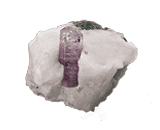 Natural Scapolite Natural Scapolite
Scapolite is actually the name of a series between the sodium chloride rich mineral called marialite and the calcium carbonate rich mineral meionite.Scapolite was originally discovered in 1913 in the Mogok Stone Tract in upper Burma (Myanmar). Scapolite is a rare and little known gemstone. It is a beautiful gem that comes in many colors.
Color: white, yellow, violet,pink
Categories: semi-precious stone
Chemical Composition: Na4Al3Si9O24Cl /CA4Al6Si6O24CO3
Crystal Group: Tetragonal
Refractive Index: 1.54 - 1.577
Hardness: 6
Density: 2.6-2.71
Occurrence: Kenya, Mozambique, Madagascar, Burma, Brazil, Canada.
| 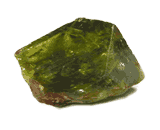 Natural Sphene Natural Sphene
Sphene is also known as calcium titanium silicate.It is named from the greek word for wedge, because of its typical wedge shaped crystal habit.Because of it's high dispersion and refractive index, a well cut sphene can display stunning brilliance. Sphene is somewhat soft and as a result is more suitable as a pendant than as a ring stone. Sphene is rarely very clean.
Color: Green, yellow. brown
Categories: semi-precious stone
Chemical Composition: CaTiSiO5
Crystal Group: Monoclinic
Refractive Index: (1.885-1.990,)-(1.915-2.050)
Hardness: 5.5
Density: 3.52-3.54
Occurrence: Austria, Dheirene-Madagascar, India, USA, Brazil.
| 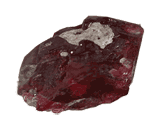 Natural Spinel Natural Spinel
Spinel is the magnesium aluminium member of the larger spinel group of minerals. It has the formula MgAl2O4.Pure spinel is white, but impurities give it a wide range of colors.Almost all colors are used in jewelry, but the most valuable and popular color is the deep red. Spinel is cut into gems for use as jewelry. The deep-red variety, known as ruby spinel, is the most prized form.
Color: orange, pink, black, blue, lavender, mauve, greenish blue, and vivid red
Categories: semi-precious stone
Chemical Composition: MgAl2O4
Crystal Group: Cubic
Refractive Index: 1.718 (-.006,+.044)
Hardness: 8
Density: 3.60 (-.03, +.30)
Occurrence: Mogok, Burma; Sri Lanka; Amboseli district, Kenya; Jemaa district, Nigeria; Matombo, Umba, and Tunduru Tanzania; Hunza, Pakistan; Pamir range, Tajikstan; Luc Yen, Vietnam; Madagascar; Australia; Sweden; Brazil.
|
|
